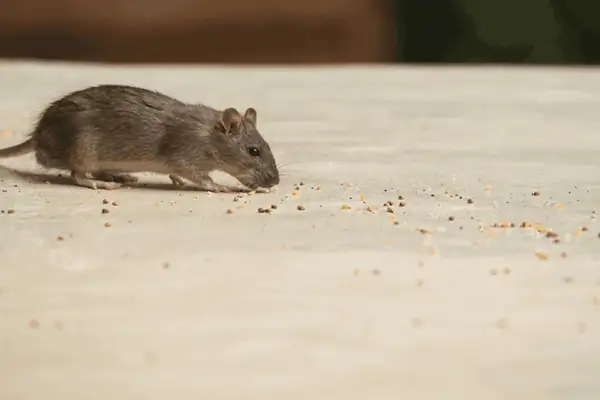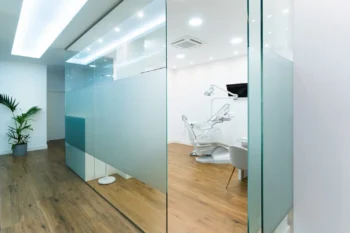
With millions of rodents across the U.S., staying ahead of pest issues is the key to protecting your business. No matter your company’s industry, stopping infestations before they begin is the best way to meet regulations, uphold your reputation, and keep a clean space.
Understanding which rodents you might encounter, the problems they can cause, and the most effective ways to keep them out will help you maintain a rodent-free environment. Here’s what you need to know to be prepared.
Opportunistic Feeders
Norway rats, Roof rats, and House mice survive by feeding on human and animal resources, while offering nothing in return, otherwise known as commensalism. Their presence can cause your business to lose inventory, harm your reputation, and even lead to operation disruptions.
Always on the hunt for their next meal, these adaptable rodents will take advantage of any available food source. Whether your business is in food supply, food service, retail, hospitality, or property management, you must stay vigilant. Make routine rodent inspections part of your daily operations to catch signs early and reduce the risk of infestations.
House Mice
Mice are constantly searching for food and a warm place to nest. Their fur varies from light brown to dark gray, and they typically range from 2 to 5 inches in length. With the ability to squeeze through gaps as small as a pencil, sealing every opening, no matter how small, is required to keep them out.
Mice are nocturnal, so they are typically active at night, making them difficult to spot during the day. However, you can notice the signs of their presence in the day, such as gnawed baseboards, damaged food packaging or cardboard boxes, and droppings. Mouse droppings are roughly a quarter inch long, pointed at both ends, and often appear in clusters.
Although mice will eat almost anything, they are particularly drawn to carbohydrate-rich foods such as grains, oats, rice, fruits, and seeds. They prefer to build nests near reliable food sources, preferring to make their nests inside walls close to kitchens, pantries, and storage areas.
Tips to discourage Mice:
- Close gaps and cracks to prevent entry, reinforcing any openings with steel wool.
- Maintain a clear perimeter around your building by removing vegetation and trimming trees and shrubs to minimize contact with the structure.
- Regularly clean and disinfect kitchens and food prep areas to reduce potential attractants.
- Keep food in tightly sealed containers and store it off the ground.
If you suspect there may be a rodent infestation in your building, it’s best to act before they spread. Contact Bug Out today for a free quote.
Norway Rats
Norway rats, often called brown rats, street rats, or sewer rats, are omnivores that will consume nearly anything they come across. With a highly developed sense of smell, they rely on scent to locate food. These rodents can reach up to 11 inches in length, have brown or gray fur, and are capable of squeezing through gaps as small as ¾ of an inch. Their fast breeding cycle allows a single female to produce up to five litters per year, which gives them rapid population growth.
As natural burrowers, Norway rats prefer underground spaces, making basements and crawl spaces common nesting sites if they gain access to a building.
These rodents pose serious health concerns, as they can carry pathogens that may contaminate food and inventory. Watch for warning signs such as gnaw marks, greasy streaks along frequently traveled routes, and the sound of movement behind walls. Their droppings are larger, pellet-shaped, and less abundant than those left by mice.
Tips to discourage Norway rats:
- Fix leaks and dripping faucets to remove moisture sources.
- Keep trash bins clean and make sure dumpsters are tightly sealed.
- Remove excessive plants around the building to limit potential hiding spots for rats.
- Store food properly and avoid leaving it exposed overnight.
Roof Rats
Roof rats typically stay outdoors, but their search for food and shelter can bring them inside, especially into attics, rooftops, and chimneys. With their exceptional climbing abilities, they navigate tree branches and power lines to reach buildings or squeeze through openings as small as a quarter.
These rodents have fur ranging from light to dark brown and are slightly smaller than Norway rats, growing up to 8 inches long. While they prefer seeds and plant-based foods, they won’t hesitate to eat whatever they can find. Their strong teeth enable them to chew through plastic, soft metals, and other materials to access food. They are also known for stockpiling and hoarding food for later.
Signs of an infestation include gnaw marks, electrical damage from chewing on wires inside walls and ceilings, greasy smudges along their travel routes, and droppings approximately ½ inch long with pointed ends.
Tips to discourage Roof rats:
- Trim tree branches to prevent rats from reaching the roof and gaining access to the building.
- Check the roof for any gaps or cracks, and seal them thoroughly.
- Maintain cleanliness in food preparation areas and keep food stored in airtight containers.
- Regularly remove trash and waste, ensuring dumpsters remain securely closed.
Feel at Ease With Professional Pest Management
A rodent problem can escalate quickly without professional help. Working with a pest control specialist like Bug Out protects your business long-term. An experienced technician will inspect your property, identify the rodent species, and implement targeted solutions for removal and consistent prevention.
While there are many indicators of rodent activity, the most obvious sign is spotting a live or dead rodent. If you see a mouse or rat near your business, take action immediately by reaching out to a pest control expert.
Have you noticed any warning signs? Contact us today to schedule a service through our website or by calling (636) 343-7900.





